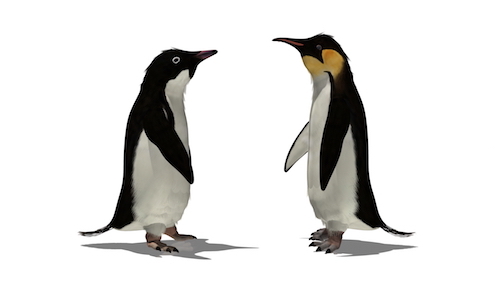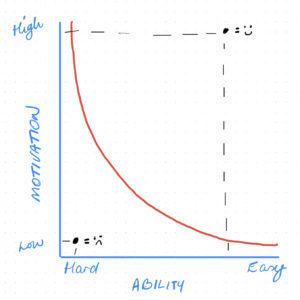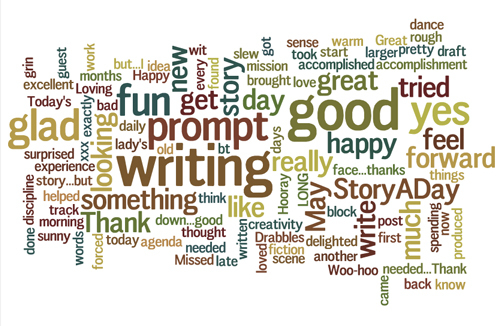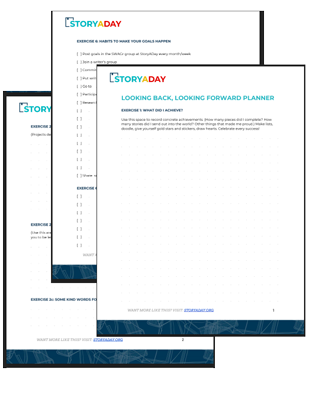Julie Duffy's Blog, page 83
January 14, 2020
Write on Wednesday – Divided Languages
This week on the podcast, I interviewed Seumas MacDonald about the importance of culture in the development of language, and about ConLangs (or constructed languages) in fiction.

The Prompt
Write a story where two or more characters come from different cultures and have difficulties understanding each other
Tips
You don’t have to make them speak different languages, or invent a language for this story. Think about the old joke about how the US and UK are two countries ‘divided by a common language’. When a language is spoken in multiple regions, it can get pretty specialized. It doesn’t even have to be country-to-country. Watch this clip of Kentuckian Jennifer Lawrence and Australian Joel Edgerton ’translating’ regional expressions from their homes. Some of Lawrence’s completely stumped me! You could write a story where one character uses expressions like these in moments of stress, completely confounding the people around them.You don’t have to use real expressions or languages. Make up words if you want to. Even easier (and, depending on your sense of humor), make up fake regional expressions and pepper your character’s dialogue with them.The important thing about this exercise is to think about the words and phrases we take for granted, and how unhelpful they might be if they hinder communication.
For example, when I moved to the US I was ready to for confusion around ‘pants’ vs ‘trousers’ vs ‘underwear’ and to have to call a ‘pavement’ a ‘sidewalk’.
What I wasn’t ready for was my inability to understand a lot of what was happening in politics because newsreaders insisted on using sports analogies from sports that (in spite of their claim to have ‘world champions’) aren’t very popular in most other countries. I didn’t know what ‘stepping up to the plate’ meant. I couldn’t even infer the meaning from the context. When someone was ‘throwing a Hail Mary’, all I knew was you would get in a lot of trouble for trying that in my church!Think of a compelling reason to get two characters together, put them in a stressful situation (which is when we tend to revert to type, and at least in my case, it’s when all those old expressions from your childhood bubble up to the surface), create some conflict, think about what each character wants, what each character needs, and go!
If you share you story somewhere (and here’s why you might not want to) post a link here so we can come and read it.
Leave a comment to let us know what you wrote about today, and how it went!
The post Write on Wednesday – Divided Languages appeared first on StoryADay.




January 11, 2020
151 – Language and Culture with Seumas MacDonald
Languages evolve from the cultures that produce them, which offers a fertile world for writers to explore, whether you are writing contemporary, realistic fiction or futuristic and fantasy worlds.
This week I talk with Seumas MacDonald a linguist and ConLang (constructed languages) expert, about language, culture and how you might think about using linguistics in your fictional worlds.
[LINKS]
Do you already think about spoken language in your writing? What was your ‘aha moment’ from this podcast? Join the discussion:
Ready to write today, not “some day”?
The post 151 – Language and Culture with Seumas MacDonald appeared first on StoryADay.




January 7, 2020
Write On Wednesday – Conflicting Habits

The Prompt
Two characters with very different habits and routines come into contact
Tips
In the novel The Martian by Andy Weir, the head of NASA is an extremely fastidious, detail-oriented character. Weir shows this in small ways — Teddy lines up items on his desk, straightens somewhat obsessively, and is very dapper. These character traits mean that when it’s time for him to make decisions on big matters (like a rescue mission for a stranded astronaut), we’re not surprised when Teddy is cautious and makes the sensible decision, not the one we’re rooting for him to make; the one that is more daring and most likely to succeed.
The character who needs to convince Teddy to do something more risky, Rich Parnell, is on the Asperger’s spectrum, someone not great at social cues or persuasion. In the movie version, the director chose to play up this conflict between Teddy and Rich in an even more obvious way by making Rich also a slob. We first see him, in contrast to Teddy, almost buried in clutter in his office.
Our habits are an outward expression of what’s important to us (or what we’re avoiding.)
Contrasting Teddy and Rich’s habits was a great way of communicating to the reader about their character, the things that motivate them, the things that shape their decisions. It gives the reader information they can use to decide whose side they’re on in any particular moment.
As you introduce the reader to your two characters, think about the ways you can demonstrate their differences (think of Teddy carefully straightening things on his desk, and Rich, waking up on his office sofa, covered in papers, drinking from a cold coffee and spitting it into a mesh wastepaper basket)Think of other habits that you could contrast: someone who values punctuality vs someone who values spontaneity to the point of being chronically late; someone who dresses lavishly vs someone who thinks clothes are merely to keep you warm; someone who reads vs someone who doesn’t (I know! They do exist, though!)For more impact when you bring your characters, put them in a situation where it is absolutely critical that they work together. (I recently re-watched Planes, Trains & Automobiles. Both these Odd-Couple characters had compelling reasons for being willing to travel together even though they were so unsuited. The film wouldn’t have worked, otherwise.) Perhaps they work together and have no choice in the matter. Perhaps they are trying to save someone else (as in The Martian). Perhaps one of them is simply unable to quit anything they start, no matter how uncomfortable. You can tie the reason they must work together to the character flaw of one, or both, characters.To keep this to a short-story scale, remember that you’re only examining one moment, one encounter, in the entire lives of each of these characters. When they come together and rub up against each other’s shape edges, you’re creating conflict, which is essential for great storytelling. Think about what your characters want, what they need, and how this encounter might grant (or frustrate) that.
If you share you story somewhere (and here’s why you might not want to) post a link here so we can come and read it.
Leave a comment to let us know what you wrote about today, and how it went!
The post Write On Wednesday – Conflicting Habits appeared first on StoryADay.




January 4, 2020
150 – Habits, Writing, and the Fogg Behavioral Method
Tiny Wins (a combination of Tiny Habits and Epic Wins) and how you can use them to reinforce your good habits, along with an explanation of Stanford University researcher BJ Fogg’s Behavioral Method — a framework that explains why we do what we do (and sometimes don’t!)
The Fogg Behavioral Method
 Find out more: https://amzn.to/36rmTDx
Find out more: https://amzn.to/36rmTDxThe post 150 – Habits, Writing, and the Fogg Behavioral Method appeared first on StoryADay.




December 31, 2019
SWAGr for January 2020
This is it! This is the first post of the tenth anniversary year for StoryADay! Expect big things for the anniversary this May!!
In the meantime, post your goals for this month and let us know how you got on with last month’s goals.

Leave a comment below telling us how you got on last month, and what you plan to do next month, then check back in on the first of each month, to see how everyone’s doing.
(It doesn’t have to be fiction. Feel free to use this group to push you in whatever creative direction you need.)
Did you live up to your commitment from last month? Don’t remember what you promised to do? Check out the comments from last month.
And don’t forget to celebrate with/encourage your fellow SWAGr-ers on their progress!
Download your SWAGr Tracking Sheet now, to keep track of your commitments this month
****
Examples of Goals Set By SWAGr-ers in previous months
Write a story a day in May – everyone!Revise at least 10 short stories – IraideWrite two short stories. – JamiAttend one writers’ conference – JulieWrite fable for WordFactory competition – SonyaRe-read the backstory pieces I wrote in May and see if I can use them within my novel – MoniqueResearch the market – JamiFocus on my serial – Maureen
So, what will you accomplish this month? Leave your comment below (use the drop-down option to subscribe to the comments and receive lovely, encouraging notifications from fellow StADa SWAGr-ers!)
(Next check-in, 1st of the month. Tell your friends!)
The post SWAGr for January 2020 appeared first on StoryADay.




December 20, 2019
149 – Looking Back & Looking Forward
In which I give you a peek into what I’m working on at StoryADay and encourage you to take a clear-eyed look at how far you’ve come, and what’s next for you.
LINKS:
Annual Review Worksheet: https://stada.me/annualreview
Ready to write today, not “some day”?
The post 149 – Looking Back & Looking Forward appeared first on StoryADay.




December 19, 2019
When To Abandon A Short Story

I gave up on a story today.
It wasn’t a horribly-written story. In fact, it had amused me and a couple of other people who’d read it. My critique group had given me stunningly insightful feedback on what I needed to do to take it from ‘promising’ to ‘good’.
But instead, I put it away and will probably never look at it again.
How Do You Know When It’s Time To Give Up On A Story?
This is a question that comes up surprisingly often among writers.
Wouldn’t you think we’d KNOW if a story was worth working on, or whether it should be consigned to the darkest recesses of our cloud drives, never to be accessed again?
Turns out: nope.
We can’t know how our stories are going to be received. We can lavish attention on them and never get them published. We can dash them off in an evening and win prizes.
(Every experienced writer has stories like this.)
Sometimes stories fail to land with an audience (readers, editors, publishers) and we never know why.Sometimes stories go out into the world and, by the time they limp home again, we’ve written more stories and can see why it’s getting rejected.Sometimes we can fix that.Sometimes we can’t, and we put the story away again until we’ve written the new story that teaches us how to fix the old one.
This is a very familiar cycle to a writer who’s submitting works to publications.
It’s different from giving up on a story altogether.
So why did I give up on my story this week?
What Do You Want To Do With Your Time On This Earth?
A while back, I sat down and wrote a manifesto for my writing life. (I recommend doing this and, if you’re interested in how I approached the project, you can read more in the article I wrote over at WriterUnboxed.com).
The point of writing the manifesto was to provide a set of checkpoints for myself, as I do my work.
The problem with being a writer—making things up out of fresh air and little squiggly marks—is that you can do anything.
When you can do anything, you could, potentially, do everything.
And that gets overwhelming.
Who Wants To Do Everything?
It turns out, none of us wants to do everything. We want to do things that matter to us.
We want to leave behind art that change the world in little ways that pushes it onto a course more in line with our values.
My manifesto acts as a set of guard rails that stops me from wandering off track and spending too much time on ideas that caught my attention for a moment, but don’t line up with my values
The Great A-Ha
As I said, I got some spectacularly good feedback on this story. A lightbulb went on. I knew exactly what I had to do to fix it.
This story, it turns out, was written from a place of bitterness. It aimed to make fun of a public figure who had angered me (no, probably not that one). It was for revenge; to prove how much better and smarter and awesome I was.
It was not written from the best parts of me.
And I don’t want to spend any more time on a project that came from unhappiness and does nothing to alleviate that.
I don’t want to spend my finite, unspecified time on this earth working on a project that doesn’t tick any of the boxes on my manifesto.
(N. B. You may write all your stories in service of a desire for revenge, or from the dark places inside you and that may be absolutely fine for you. It’s just not how I do my best work.)
Sunk Costs
There’s a thing called the Sunk Cost Fallacy. It’s the mistaken belief that because you have invested in a thing in the past, it’s worth continuing to invest in it, otherwise all your previous work is lost.
In our case, that investment is time and emotional energy.
Just because you spent time on a story, doesn’t mean you have to spend more time trying to make it perfect.
You just don’t.
The investment you made will pay off anyway. You may have learned something about writing dialogue, or about how quickly you can complete a draft, or, as in my case, what you don’t want to be writing.
The best way to learn from mistakes is to make as many of them as quickly as possible and learn from them.
If you’d like a structure for producing 10 stories in the next 6 weeks, check out the StoryADay Warm Up Course
Learn when to cut your losses and write something new.
(Let’s face it, with almost limitless storage capacity at our fingertips, it’s not like you ever actually have to delete the story. But if it makes you feel better, you can.)
Your Permission To Give Up On A Story
Over the years I’ve learned that one of the most valuable things I can do here at StoryADay is give people the permission they’ve been too hesitant to give themselves. So here goes:
You have permission to put that story away and move on to something else.
Really.
Just promise me you’ll finish a draft of the next one before you make any judgments about it.
And then write another one.
Keep experimenting and finding your voice.
And most of all, keep writing.
Your turn: Do you find it hard to cut stories loose? Do you delete them with glee, or is everything triple-backed-up somewhere, just in case?
The post When To Abandon A Short Story appeared first on StoryADay.




December 14, 2019
148 – Terrific Titles or How To Hook Your Reader
A title is the sizzle that sells your story, but too many writers still struggle with this important part of the writing process.
Today’s podcast helps you level up your title game.
LINKS:
Get the free download: https://stada.me/500titles
Get Tobias S. Buckell’s It’s All Just A Draft (clicking this Amazon affiliate link helps support this podcast) https://amzn.to/2PH31Fu
Ready to write today, not “some day”?
The post 148 – Terrific Titles or How To Hook Your Reader appeared first on StoryADay.




December 11, 2019
[Write On Wednesday] Picture Prompt
Sometimes it takes a traditional writing prompt to get us writing…and that’s perfectly OK. When you could write about absolutely anything, that’s too much choice, and can be paralyzing.
So this month at StoryADay I’m focused on providing prompts and info to get you to your writing as quickly as possible. Today, it’s a picture prompt.

The Prompt
Write a story inspired by this picture
Tips
Set a timer to stop yourself ‘faffing about’ (as we say in Scotland) and wasting time. Set a timer for 40-60 minutes and aim to get to the end of the story in that time.Use the StoryADay Short Story Framework to map out what might happen in your story (and yes, you can do it piece by piece: map out the character first, then start writing. If/when you get stuck, go back in and work on the middle section of the framework. When you start to approach the end, pull out the framework again, to make sure your aim is true. Don’t have a copy of the Short Story Framework? Request it here.)You don’t have to be literal, with your use of this picture. Just let it roll around inside your brain for a bit, and see what shakes loose.
I’d love to hear from you. What did you write about, after using this prompt?
If you share you story somewhere (and here’s why you might not want to) post a link here so we can come and read it.
Leave a comment to let us know what you wrote about today, and how it went!
The post [Write On Wednesday] Picture Prompt appeared first on StoryADay.




December 7, 2019
147 – Let The Yeast Do Its Work
This week’s podcast features a clip from an episode from two years ago, in which I talked about the different cycles in a writing life. And I apologize in advance for making you crave some freshly baked bread…

Try this StoryADay Annual Review Worksheet to help you review your year, assess which phase you’re in, and plan for the future.
The post 147 – Let The Yeast Do Its Work appeared first on StoryADay.







